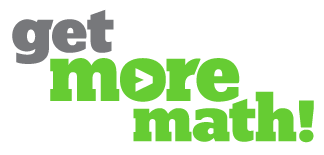3 ways teachers can make the most of data to boost math skills
Combining day-to-day math practice and cumulative assessment allows teachers to be more effective—and efficient.
Josh Britton is a former teacher and the founder and CEO of Get More Math, which helps teachers break the math forgetting cycle in grades 3–11 with targeted practice that combines new material with spiral review to enhance long-term retention.
Students entered the 2022–2023 school year at different levels of math achievement; this happens every school year, but the differences in students’ abilities have been made more evident as disruptions to learning caused by the pandemic widened the skill gaps between our highest and lowest achieving students even more.
The latest results from the National Assessment of Educational Progress reveal the extent to which the pandemic disrupted learning. In fourth and eighth grade, math scores showed the biggest decline since the assessments were first given to students in 1990, with eighth-grade students’ scores dropping 8 points and fourth-grade students’ scores dropping 5 points compared to 2019.
Teachers have their work cut out for them as they try to bridge students’ skill gaps in math. In addition, schools and districts nationwide are facing significant staffing shortages—with rural and under-resourced schools and districts suffering the most.
With fewer paraprofessionals, math specialists and other supporting staff in schools, teachers are carrying the burden of these additional responsibilities. This means teachers don’t have ample time to provide personalized, one-on-one support for students.
During my 18 years in the classroom, I struggled with assessing each of my student’s needs and finding the time to provide the personalized instruction needed for each of my students—all while sticking to my curriculum. Below are key insights I recommend education leaders consider as they address math achievement challenges and student needs.
1. Lead math achievement with data
To ensure students are set up for success, teachers need real-time data to see precisely where their students require additional support so they can target instruction appropriately. Yet, with classroom time at a premium, teachers can’t afford to spend the allotted time on assessing students to determine their math skills and knowledge gaps.
Combining simultaneous spiral math practice and cumulative assessment offers a critical solution. This process can help teachers leverage student data more effectively—without taking valuable class time away from instruction—by providing individual, highly targeted math instruction and practice for students, while at the same time evaluating and reporting on their skills.
2. Produce actionable insight
When it comes to instruction, teachers should leverage the idea of “spiral review.” Simply put, this entails mixing new concepts and past materials to ensure students retain important concepts and continue growing as learners.
Technology is an important piece of this puzzle. It’s helpful to use a platform that combines practice and assessment so that educators can easily see where students are making mistakes as they’re working to correct those errors. At the same time, software can identify where gaps exist in students’ skills and generate a detailed, standards-aligned report for the teacher.
3. Review reports and student data
As educators, we need to determine each student’s progress and where additional support is needed. Actionable, meaningful data is crucial and essential for tailoring instruction to meet the diverse needs of each student—such as:
- Reteaching a skill or concept that students are struggling to grasp
- Arranging students by skill or ability to facilitate small-group instruction
- Working with students one-on-one to go over concepts that are still giving them trouble.
Collecting and reporting on this information while simultaneously offering individualized practice and instruction can accelerate math education in a highly efficient way. For example, I gathered real-time data to implement a “gradual release” strategy when transitioning students from a math lesson to independent practice.
Students showed their work on dry-erase boards during guided practice. As I identified students that consistently showed initial understanding, I released them to independent practice. I was then able to give more focused assistance to the students who needed it the most.
This is a key advantage at a time when students’ needs are acute—and school instructional staff are overburdened. A versatile platform that combines spiral math practice and cumulative assessment can help teachers make better use of their limited time to close math achievement gaps for everyone.
